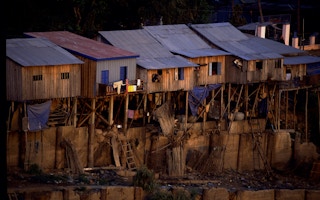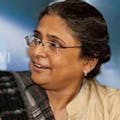With landmark agreements including the Sustainable Development Goals and the Paris Agreement in place, there is much discussion on the scale of funding needed to deliver these ambitious agendas, and the institutional structure through which it will be delivered.
Part of this funding is meant to come from global funds – for instance those set up to support climate change adaptation and mitigation or to tackle specific diseases such as malaria.
The thorny issue of where the money will come from and the need for new funding models will also be high on the agenda at Habitat III.
This points to growing pressures for global funds to address a range of environment and development challenges. But how will these funds be found? And, importantly, will they be accessible to key stakeholders – local governments and local civil society organisations?
Vertical funding
Whether from multilateral or bilateral agencies, development finance flows through vertical structures. So too do global funds.
Top-down decisions made by distant international funding institutions are far removed from messy day-to-day realities. Truth and reality are based on who looks at a situation, context or activity. And local priorities too often go unnoticed.
Who gets funding, for what, and how, depends on where the money comes from, who sets the agenda and whose definition of what needs to be done informs this. This shapes design, delivery, execution and assessment of resource flows.
The effectiveness of all international agencies and global funds depends on the quality and capacity of the (mostly local) intermediaries that implement the initiatives they fund. And it is rare for these intermediaries to be accountable to local populations whose needs they are meant to address.
Global goals and local needs
This blog reflects on my work with Slum/Shack Dwellers International (SDI), founded in 1996 and now with more than 30 national affiliates, and with the Alliance of SPARC, Mahila Milan and the National Slum Dwellers Federation in India. This alliance seeks to support the urban poor to define their priorities and execute plans based on their own data and experiences. It works through savings groups mostly formed and managed by women.
Working with SDI underlined to me how the goals of international agencies and global funds must reflect local needs, especially those of the poor. Part of this is helping to create organisations of the urban poor, investing in their development and asset creation culture. In this way, the urban poor become part of the overall development process influential development actors.
Observations of funding spend on the ground
-
From a local perspective, the amount of money allocated globally to some focus areas (climate change, sanitation, malaria, child immunisation) seems huge. Yet, paradoxically, it is often not enough to cover even the costs of existing deficits
-
The criteria for selecting who gets funding is little influenced by those in greatest need, whom the fund is meant to reach
-
Large funding pots are allocated to a few agencies mainly in the global North, or national governments with generally no accountability to the last mile (or, more appropriately for the provision of water services, the last 100 metres)
-
Pressures to spend leads to project money being distributed quickly, often with very little planning
-
Key local stakeholders are rarely involved in project design or able to share their experiences, while evaluations hardly ever help course corrections, and
-
Leaving a ‘legacy’ of resources is not discussed; local projects are carried out by civil servants and professional consultants and these leave when the project is over.
The role of urban poor movements
Urban poor groups represent 30 to 75 per cent of the residents of most cities in the Global South. They are locked in poverty, usually live in informal settlements and are kept on the margins of society.
So how can urban poor groups build their collective strength to steer how global funds can be spent more effectively? They must fight for their collective right to be in the city, to avoid evictions. They must engage with city government and water and sanitation utilities to take their place as one of the critical actors among the cast of stakeholders that can transform the city.
Over the last 50 years, many national and some global grassroots networks have worked to develop and strengthen urban poor collectives, helping to create a voice for these groups who the city all too often treat as invisible.
By identifying their priorities and exploring what they can do themselves, groups develop their own role in resolving their needs. They, along with other stakeholders in civil society, move from being beneficiaries to active drivers for change.
They change roles and relationships with city politicians and administrators. Action at the local level sets precedents for addressing city and national challenges. Such transformation addresses the risks linked to development investments, its absorption and its utilisation.
Communities that are empowered to link neighbourhoods, cities and provinces and operate nationally can help change who participates in executing, supervising and managing assets created. A culture of dialogue for problem-solving and co-production in one focus area (e.g. healthcare, education, water) can create the foundation for addressing other priorities.
Networks allow sharing of experiences, help in problem-solving and in producing a robust process that can retain its innate mission but is replicated, adapted, or morphs into whatever is needed sort out that challenge in other localities.
SDI and other global networks of the urban poor, regardless of their focus (habitat in the case of SDI, others focus on women children, or livelihoods) have – in their own modest ways – demonstrated their capacity to work effectively with other city-based, national or international organisations and put resources to their best use.
Key messages to those designing or working in global funds
-
Develop long-term partnerships between technical and professional organisations and networks or social movements of the poor, so that design and delivery is effective and accountable to both funders and communities
-
Nurture relationships with global funders to build trust and work with them to develop subject expertise and financial and monitoring capacities, and
-
Build systems that ensure a legacy of funding and remember that the real memory banks of good programs and practice are the poor themselves.
Sheela Patel is founder and director of SPARC, a Mumbai-based NGO. This post was originally published from the IIED blog.











